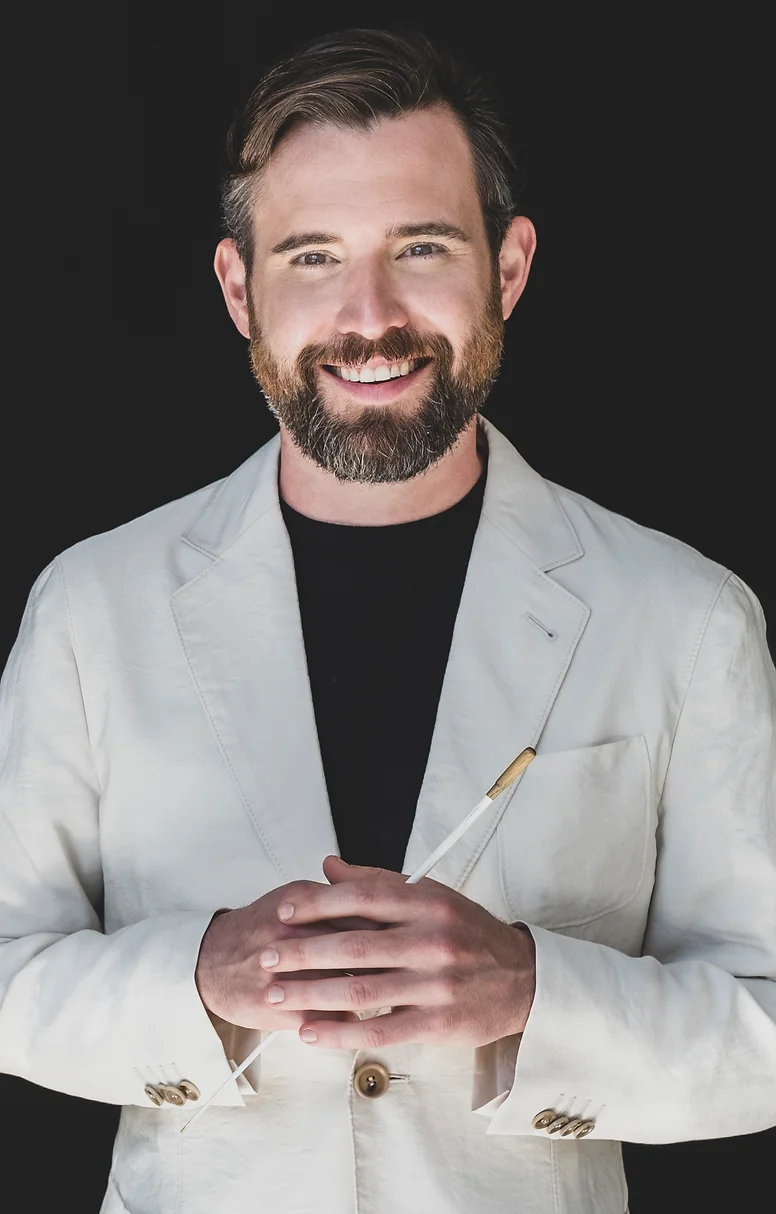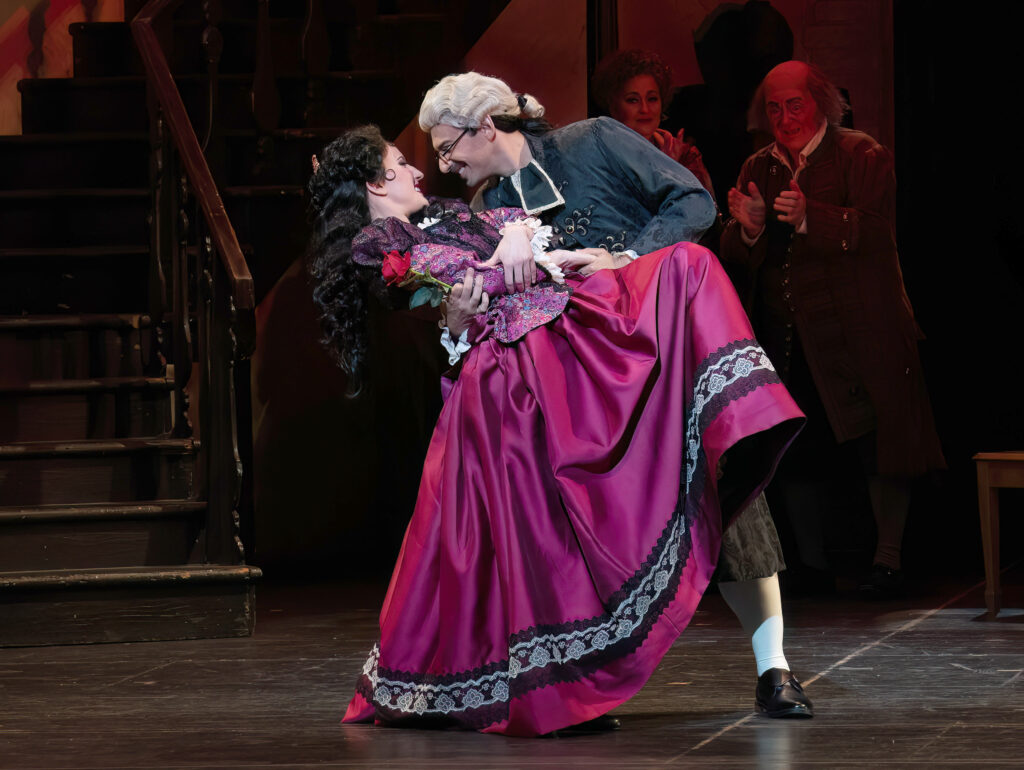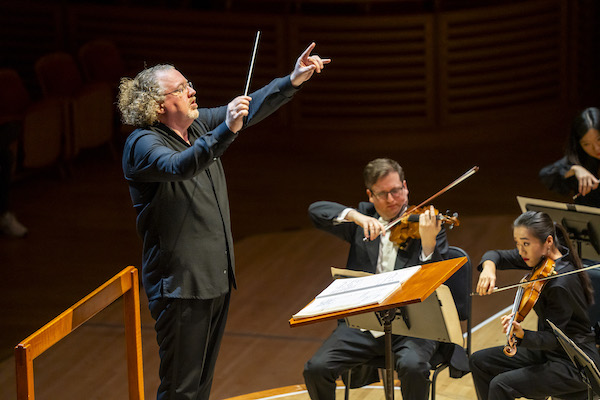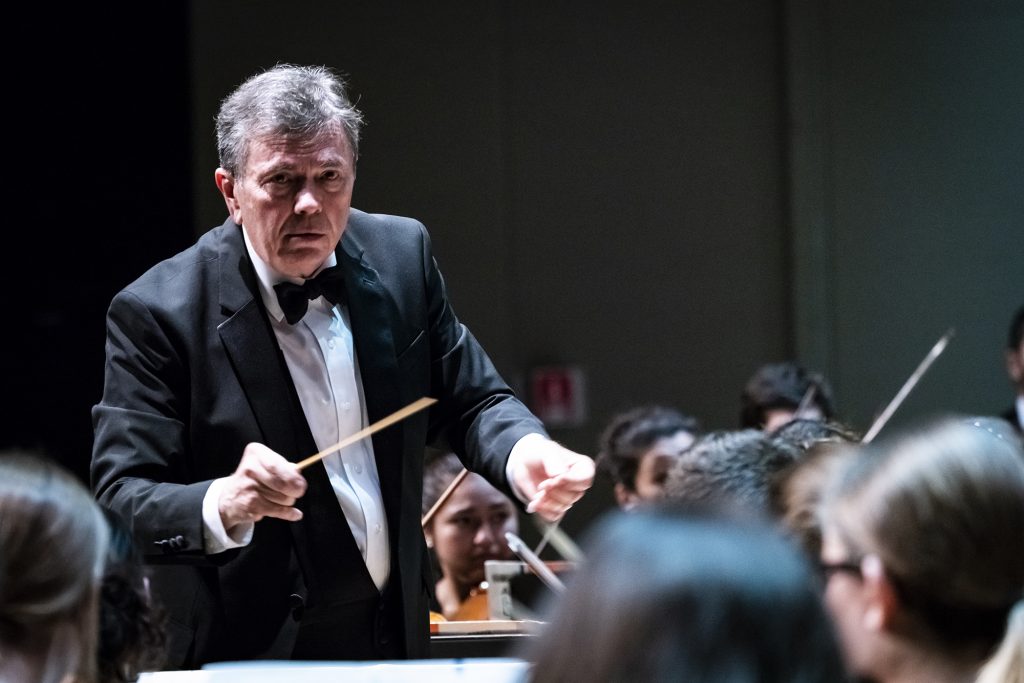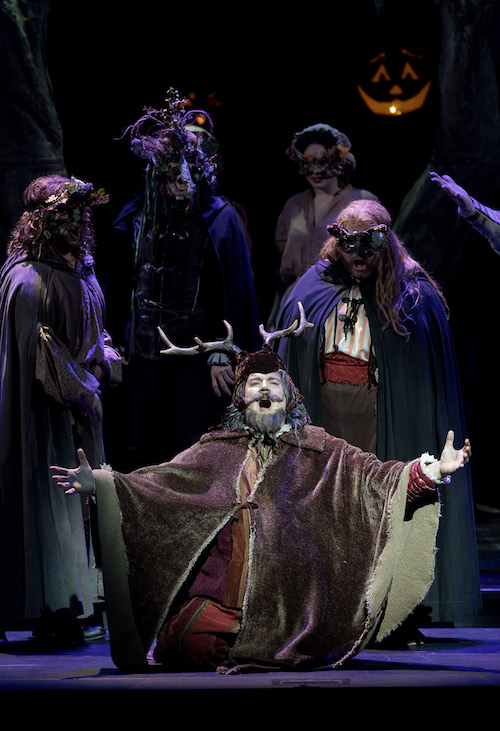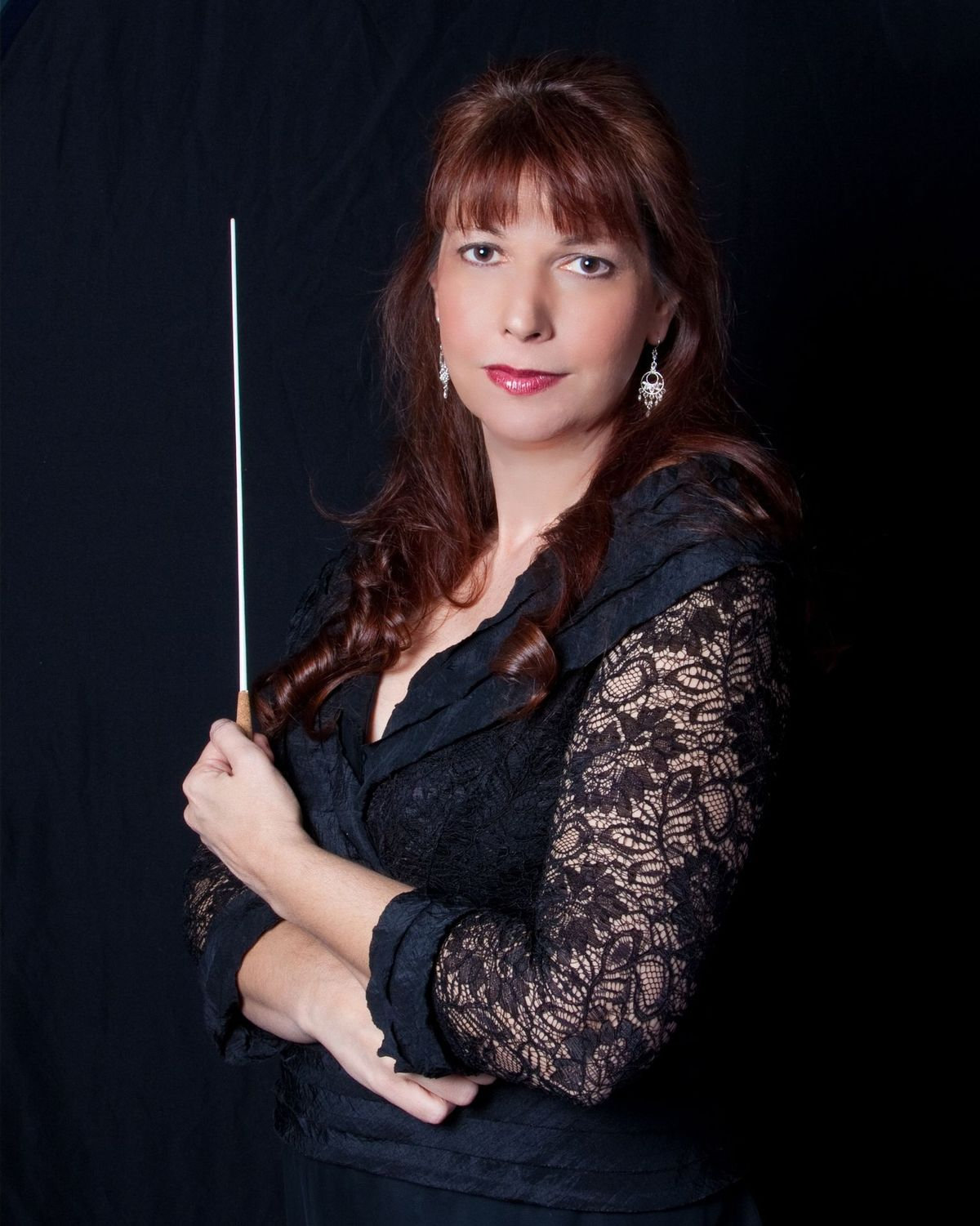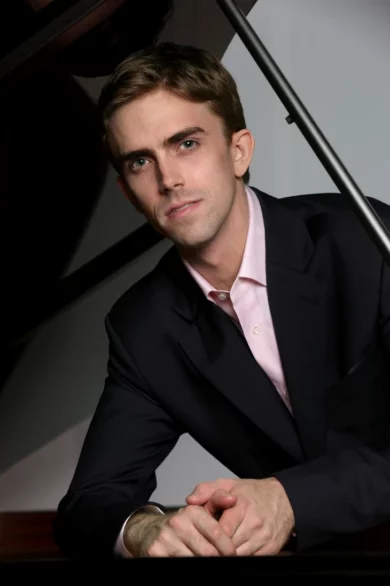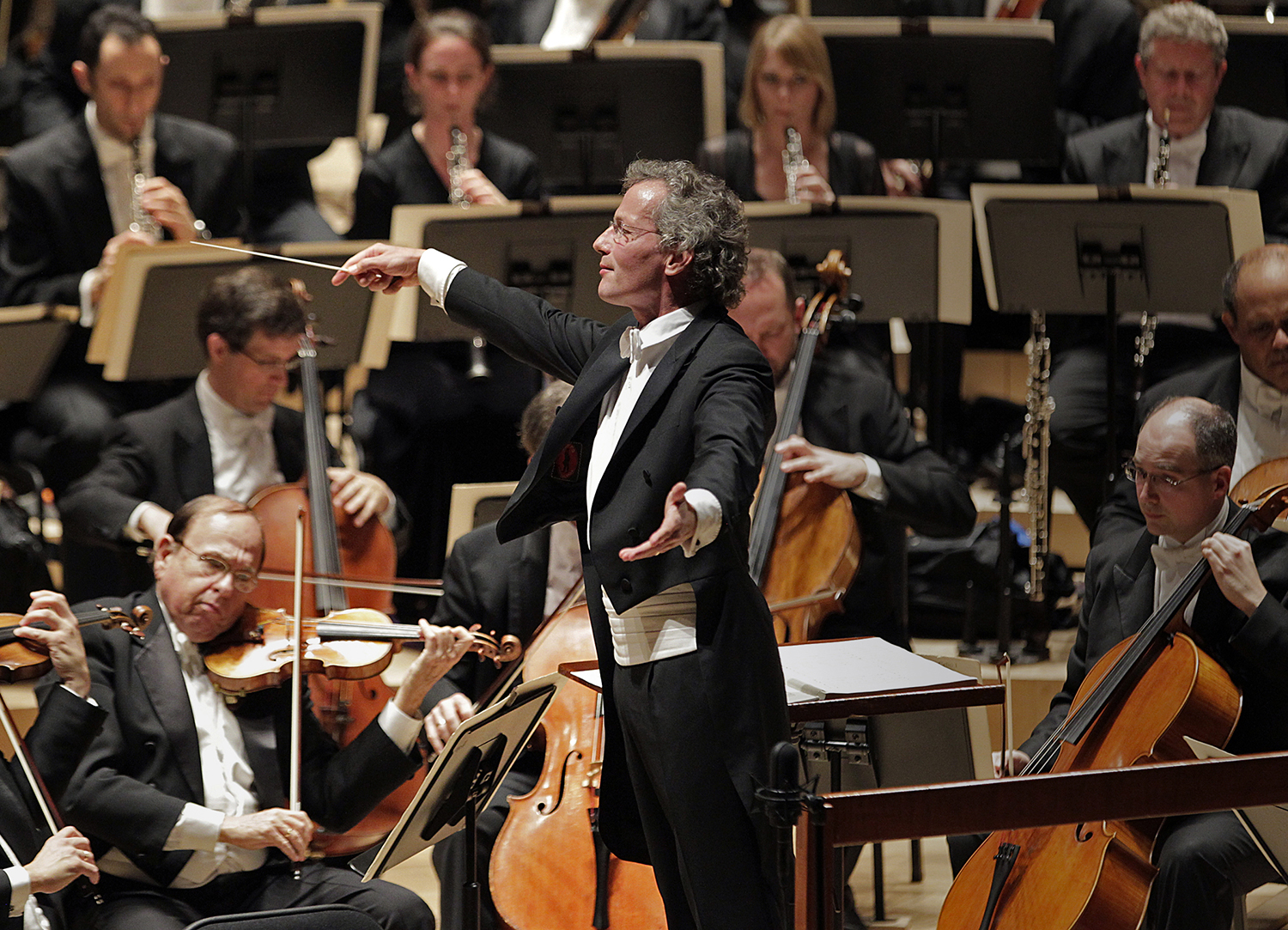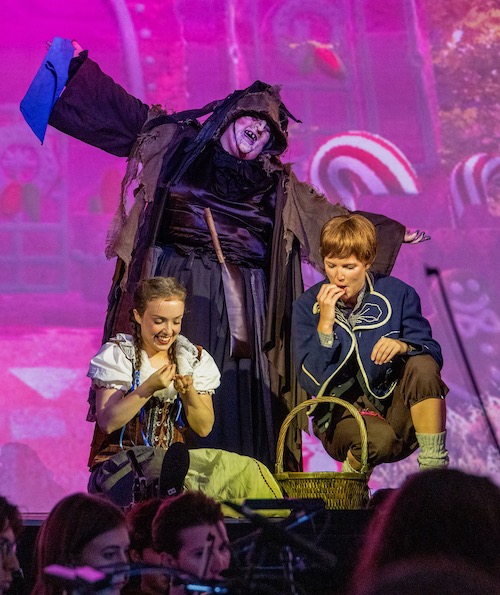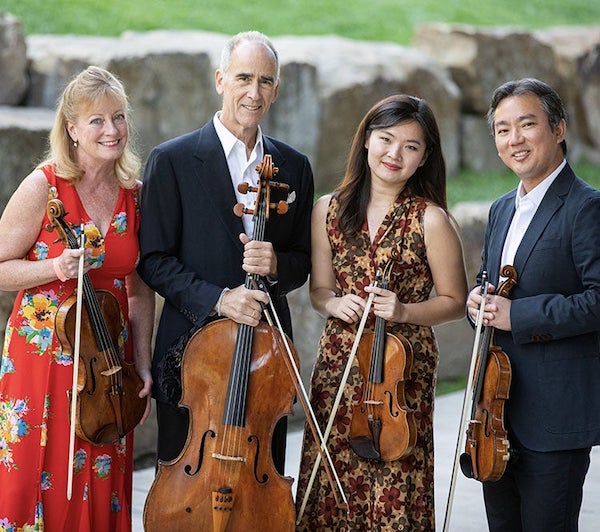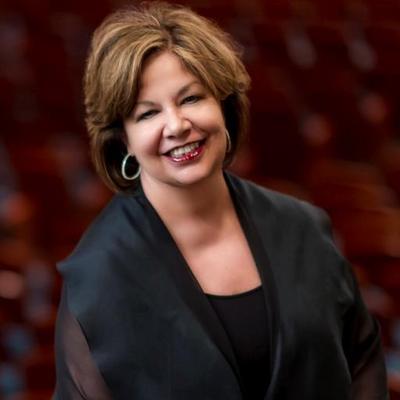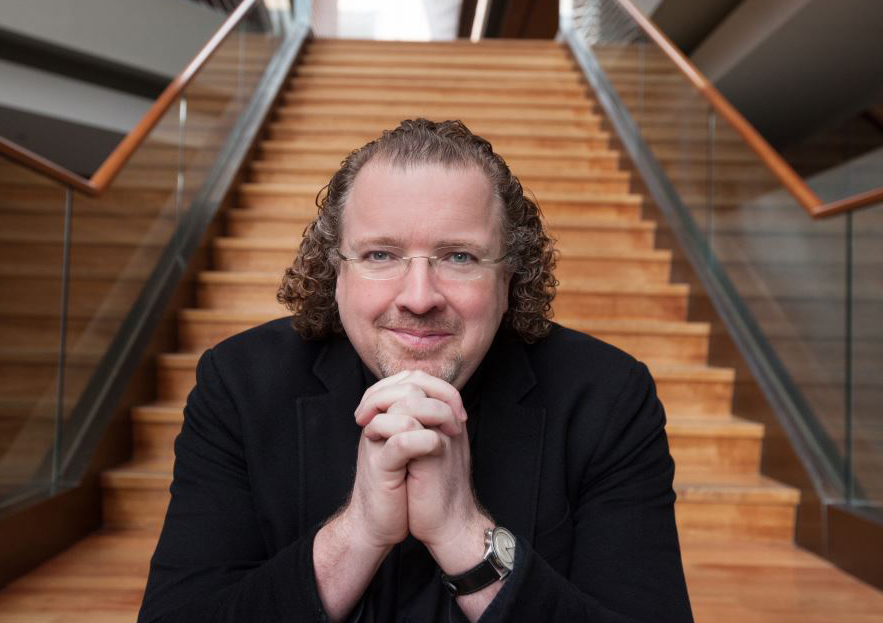Top Ten Performances of 2023
1. Rameau: Castor et Pollux. Patrick Quigley/Seraphic Fire
Seraphic Fire’s season-opener was a rare excursion into music of the French Baroque. The prologue and scenes from the original 1737 version of Jean Philippe Rameau’s Castor et Pollux spotlighted the score’s innovative approach to music drama and a harmonic invention far ahead of its time. Patrick Quigley drew precise, detailed and minutely blended singing and playing from the chamber choir and instrumentalists. James Reese and Rebecca Myers excelled in solo declamation and arias.
2. Rossini: The Barber of Seville. Florida Grand Opera
With a fun-filled staging by Matt Cooksey, Florida Grand Opera’s production of Rossini’s most popular opera sparkled both musically and theatrically. Stephanie Doche was a coquettish Rosina with a dusky mezzo that could spin patter at top speed. As Count Almaviva, Michele Angelini was that rare tenor who combined stylishness, a creamy timbre and effortless coloratura. Anthony Barrese led a classically proportioned account of this bubbly score.
3. Strauss: An Alpine Symphony. Stéphane Denève/Cleveland Orchestra with New World Symphony
This portrait of 24 hours in the mountains represents Richard Strauss at his most expansive and luxuriant. With an ensemble of 143 players, including 90 strings alone, New World Symphony artistic director Stéphane Denève drew lustrous sonorities from the combined Clevelanders and New World fellows. He displayed a real affinity for Straussian fluidity while keeping taut control of the larger musical structure. A one-of-a-kind performance.
4. Ravel: Daphnis et Chloè. Gerard Schwarz/ Frost Symphony Orchestra
Gerard Schwarz, an orchestral technician of the first rank, led the University of Miami’s Frost School of Music students to a new level of excellence in both suites from Ravel’s ballet. In a performance that could hold its own with major professional orchestras, Schwarz drew rich, voluptuous sonorities in a reading that astutely mixed primal rhythms and Gallic elegance.
5. Verdi: Falstaff. Palm Beach Opera
Aside from the occasional contemporary works staged by Florida Grand Opera, South Florida opera companies are generally cautious with programming (witness the near-absence of Wagner). But Palm Beach Opera deserves credit for a fine production of Verdi’s Falstaff, the composer’s final opera and one that’s a harder sell to audiences than romantic dramas such as La Traviata or Rigoletto. Striding across the stage in a fat suit, the baritone Michael Chioldi brought the title role heroism, humor and pathos (David Fleshler)
6. Weill: The Road of Promise. Elaine Rinaldi/Orchestra Miami
The oratorio version of Kurt Weil’s opera-pageant The Eternal Road turns the biblical Old Testament into a compelling music drama. Weill’s diverse musical mix ranges from Baroque counterpoint to Stravinsky style dissonance. More than a smattering of Weill’s Weimar-era musicals and Broadway shows to come run through the work. Elaine Rinaldi led a large chorus and orchestra in a well-paced traversal with terrific solo singing from Alan Glassman, Mark Delavan and Elizabeth Caballero.
7. Schumann: Piano Concerto. Reed Tetzloff. Hobart Earle/Miami International Piano Festival
The opening Concerto Night of the Miami International Piano Festival peaked with a bracing reading of Schumann’s Piano Concerto by Reed Tetzloff. Combining artistic intelligence, immaculate technique, and daredevil bravura, Tetzloff’s playing was idiosyncratic in the best sense of the term. Leading an excellent 31-piece ensemble, conductor Hobart Earle was a full partner in this revitalized iteration of a repertoire standard.
8. Music by Schubert and Tchaikovsky. Franz-Welser Möst/Cleveland Orchestra
The Cleveland Orchestra is the most classical of American ensembles. Their blending and cohesion display the collaborative skills of the best chamber music groups writ large. That was amply demonstrated in a program of two familiar symphonies—Schubert’s “Unfinished” and Tchaikovsky’s “Pathetique.” There was nothing routine about these readings from Franz Welser-Möst and the Clevelanders. A lighter touch in the Schubert and tightly sprung intensity in the Tchaikovsky offered a freshly minted take on familiar masterpieces.
9. Humperdinck: Hansel and Gretel. Miami Beach Music Festival
Engelbert Humperdinck’s enchanting fairy tale opera was enhanced by path-breaking 3D-mapping technology, producing backdrops of a forest, lake, waterfall, a fiery furnace and gingerbread house that filled the stage, walls and ceiling of the Faena Forum in Miami Beach. Designed by festival director Michael Rossi, the revolutionary scenic milieu contributed a cinematic scope. Aaron Bried’s cleanly sculpted conducting and fine performances by Stella Fitzgerald, Leah Huber and Annika Bell made the production a summer delight.
10. Works by Mozart and Schumann. New York Philharmonic String Quartet. Friends of Chamber Music
The four first-chair principals of the New York Philharmonic made for a heady night of refined ensemble and subtle music making. In their annual visit to the Friends of Chamber Music series, the players captured the drama and pathos beneath the surface gleam of Mozart’s “Dissonance” Quartet. A modern, streamlined approach to Schubert’s “Death and the Maiden” Quartet emphasized strong linear flow that made one realize anew what a pivotal opus this is to the chamber music literature.
Honorable Mentions
Olivier Messiaen had one of the most distinctive creative voices of the twentieth century. Strongly influenced by spirituality and birdsong, his music shimmered and flared in bursts of instrumental color. Des canyons aus ètoiles (From the canyons to the stars), his last major orchestral work, distills the essence of Messiaen’s personal vision. Matthias Pintscher led members of the New World Symphony and eight players from Paris’ Ensemble Intercontemporain in a lucid, vividly realized portrait of the composer’s Utah inspiration.
Also Michael Tilson Thomas’ New World Symphony-Miami City Ballet presentation of Debussy’s Afternoon of a Faun and Stravinsky’s Agon; Seraphic Fire’s 20th anniversary and Bach programs; Florida Grand Opera’s Tosca and double bill of Gianni Schicchi and Buoso’s Ghost; Miami Lyric Opera’s Lucia di Lammermoor with Eglise Gutierrez a stunning Lucia; Alisa Weilerstein’s Barber Cello Concerto with Gemma New and the New World Symphony; Stéphane Denève’s performances of Strauss’ Ein Heldenleben and Ibert’s Escales with NWS; Leif Ove Andsnes’ Beethoven “Emperor” Concerto with Andrew Grams and NWS; Francesco Libetta’s exuberant Prokofiev Piano Sonata No. 7 and Julian Libeer’s imaginative pairing of Bach’s Well Tempered Clavier with Chopin, Beethoven, Ligeti and Schoenberg at Miami International Piano Festival; Maria João Pires’ Schubert and Beethoven sonatas for Frost Chopin Festival; Shostakovich’s String Quartet No. 9 by members of the Cleveland Orchestra and NWS.
Anne-Sophie Mutter and the young string players of the Mutter Virtuosi gave an exciting and sensitive account of Vivaldi’s Four Seasons, a work where the excessive familiarity makes a gripping performance all the more impressive. (David Fleshler)
Dishonorable Mentions
Fernanda Aoki Navarro’s Unnoticed Spectacles proved more “theater of the absurd” than chamber music at NWS; Peter Oundjian’s brassy, exaggerated Enigma Variations with New World Symphony
Worst Innovation
Joshua Bell’s new cadenza for the Mendelssohn Violin Concerto. Although there’s no reason not to attempt a new cadenza for a classic work, Bell’s jarring burst of virtuosity shorted the magical arpeggios at the end of the original version and sounded tacked-on and out of place. (David Fleshler)
Best Contemporary Work
Bernd Richard Deutsch’s Intensity, a postmodern matchup of energetic motifs, brass fanfares and celesta and harp gliding over hazy strings. The work shows a composer one wants to hear more from, superbly exhibited by Welser-Möst and the Cleveland Orchestra
Best Revivals
Benjamin Britten’s String Quartet No. 2, a dark rumination from the last days of World War II, is Shostakovich with a British accent, and was played with precision and supple cohesion by the Ehnes Quartet.
The Road from Hiroshima: A Requiem by Shawn Crouch. Seraphic Fire’s first commissioned work, is a moving and anguished portrait of the Japanese city before and after the dropping of the first atomic bomb. Patrick Quigley led his singers and UM Ensemble Ibis in a searing recreation of a strikingly original soundscape.
César Franck’s great Symphony in D Minor has lost its status as a concert-hall favorite. But Gerard Schwarz and the Palm Beach Symphony gave a vibrant performance that was brooding, Romantic and finally, joyful. (David Fleshler)
Change at Florida Grand Opera
In September, Susan Danis resigned as general director and CEO of Florida Grand Opera. About a month later, Maria Todaro was announced as her interim successor in the position although Todaro’s appointment is expected to be made permanent by the end of the current season (which was planned by Danis).
During her 11-year tenure, Danis raised the company to new artistic heights. She presented important contemporary works and operas that were outside the standard operatic canon in addition to familiar fare. Most importantly, Danis maintained high standards of production and musical performance, which had badly deteriorated under her predecessor Robert Heuer. She cast operas with excellent singers and attracted talented conductors and directors to helm the performances.
When directors of other opera companies threw up their hands and went dark during the Covid epidemic year of 2021, Danis produced a season of intimate American operas at the Miami Theater Center in Miami Shores (with distanced seating). That was the boldest and most imaginative of her many triumphs.
As Todaro takes up the directorship, her challenge will be to maintain the strong artistic standards that Danis achieved.
New Leadership at New World Symphony
Stéphane Denève took over leadership of the New World Symphony, succeeding co-founder and artistic director laureate Michael Tilson Thomas. Denève’s guest appearances with the New World fellows had already produced consistently excellent concerts. From his official debut as director in April, it was obvious that the management and board had selected the right artist to continue Tilson Thomas’ legacy.
The French conductor consistently draws a rich, luxuriant tone from the strings and exhibits superb balancing of instrumental choirs. Whether conducting his native Gallic repertoire or Mozart, Strauss, Prokofiev, Rachmaninoff or American music, his performances have been imaginatively conceived and exciting. Denève’s future plans include large scale choral-vocal works, fully staged operas and diverse contemporary repertoire. The New World Symphony has embarked on an exciting new era.
Posted in Articles
Leave a Comment
Wed Dec 20, 2023
at 8:15 am
No Comments
